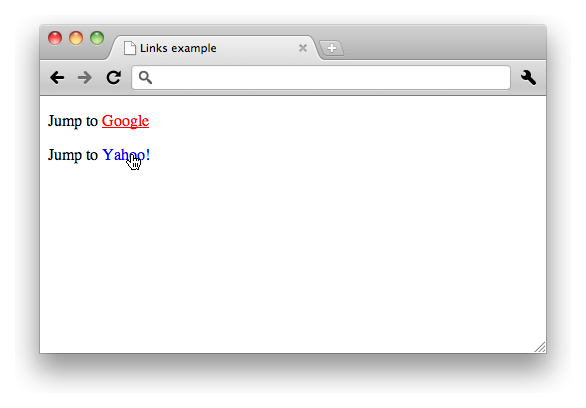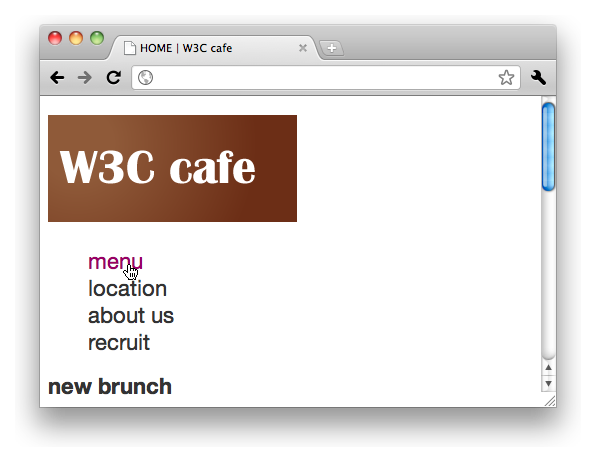Css/Training/links
Appearance
Link state
The link pseudo-classes
Web browsers commonly display unvisited links differently from previously visited ones.
[Syntax]
a:link{ Declarations }
a:visited{ Declarations }
- a:link: applies for links that have not yet been visited.
- a:visited: pplies once the link has been visited by the user.
The dynamic pseudo-classes
Interactive Web browsers sometimes change the rendering in response to user actions.
[Syntax]
a:hover{ Declarations }
a:active{ Declarations }
- a:hover: applies while the user designates an element (with some pointing device), but does not activate it.
- a:active: applies while an element is being activated by the user.
Example
[style.css]
a:link, a:visited{
color: #ff0000;
text-decoration: underline;
}
a:hover, a:active{
color: #0000ff;
text-decoration: none;
}
[index.html]
<p>Jump to <a href="http://www.google.com/">Google</a></p> <p>Jump to <a href="http://www.yahoo.com/">Yahoo!</a>
Challenge
1. Changes the color of side navigation by link state.
[style.css]
nav ul li a:link, nav ul li a:visited{
color: #333333;
text-decoration: none;
}
nav ul li a:active, nav ul li a:hover{
color: #990066;
text-decoration: none;
}
In the next week, you will learn the Box model. It is very important in the study item of CSS.

